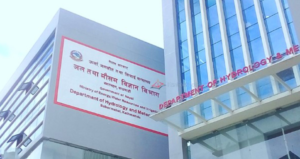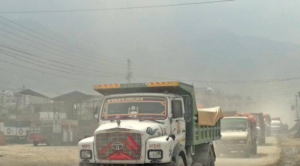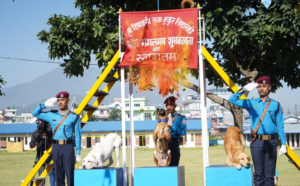Nepal’s endless transitions: Cries for governance that serves

Agency: In the shadow of the Himalayas, Nepal stands once again at a precarious crossroads. On September 9, 2025, Prime Minister K.P. Sharma Oli tendered his resignation amid a maelstrom of youth-led protests that have engulfed the nation, claiming at least 30 lives and reducing parts of Kathmandu’s parliament building to smoldering ruins. What began as fury over a social media blackout escalated into a full-throated Gen Z uprising against entrenched corruption, economic despair, and a political elite seemingly insulated from the hardships of ordinary Nepalis. Curfews clamp down on the capital, the army patrols the streets, and protesters-many barely out of their teens-chant demands for accountability and reform. This is not mere unrest; it is the latest chapter in Nepal’s torturous saga of political transitions, a pattern that has repeated with uncanny regularity every decade or so since 1951, breeding chronic instability that hampers development and erodes public trust.
Nepal’s political history since the mid-20th century reads like a chronicle of dashed hopes and abrupt reversals. In 1951, pro-democracy forces ended the Rana dynasty’s rule, restoring power to the Shah monarchy and introducing parliamentary democracy. However, in 1960, King Mahendra dissolved parliament and imposed the partyless Panchayat system. This authoritarian pivot stifled dissent but sowed seeds of resentment.
The cycle persisted. In 1990, another mass movement toppled the Panchayat regime, restoring multiparty democracy under a constitutional monarchy. King Birendra bowed to the winds of change, and Nepal entered a euphoric era of liberalisation. But stability proved elusive. The 1996-2006 Maoist insurgency, fueled by rural poverty and ethnic marginalisation, claimed over 17,000 lives and culminated in the abolition of the monarchy in 2008, birthing a federal republic. A decade on, in 2015, a new constitution aimed to federalise power and enshrine secularism and inclusion. Yet, even this landmark document arrived amid Madhesi protests and border blockades, underscoring Nepal’s fragility.
Fast-forward to the present, and the rhythm holds: roughly every ten years, a seismic shift disrupts the status quo. From 1951’s democratic dawn to 1960’s royal clampdown; 1990’s second republic-lite; 2006’s peace accord, and 2008’s republican leap; 2015’s federal blueprint-and now, 2025’s Gen Z revolt. These intervals are not coincidental but symptomatic of deeper fissures. Governments topple with metronomic frequency: Oli himself has served three non-consecutive terms since 2015, each felled by coalition intrigue or street pressure. The result? A democracy in name only, where prime ministers average less than two years in office, policies languish unfinished, and foreign aid-vital for a landlocked nation of 30 million-flows into a vortex of inefficiency. Economic growth hovers around 4-5% annually, but youth unemployment exceeds 20%, driving a brain drain of over 1,500 migrants daily. Political instability isn’t just a nuisance; it’s a thief, stealing Nepal’s potential amid its breathtaking geography and resilient people.
At the heart of this instability lie two insidious forces: corruption and dynasticism, twin plagues that have metastasised through decades of flux. The 2025 protests, dubbed the “Gen Z Revolution” by participants, erupted not over abstract ideology but visceral grievances against graft. A government-imposed ban on social media platforms like TikTok and Instagram-ostensibly to curb “misinformation”-backfired spectacularly when leaked videos surfaced showing politicians’ scions flaunting luxury abroad while domestic infrastructure crumbled. Protesters torched effigies of Oli and stormed parliament, their placards reading “Enough is Enough” and “Corrupt Elites Out.” Transparency International ranks Nepal 108th out of 180 countries on its Corruption Perceptions Index, with public procurement and judicial appointments as epicenters of sleaze. Billions in earthquake reconstruction funds vanished post-2015, and hydropower deals-key to Nepal’s energy dreams-fester in kickback scandals. The protests’ death toll, now at 72, includes students gunned down by security forces, amplifying calls for an independent anti-corruption commission with teeth.
Corruption thrives in Nepal’s fractured politics, where alliances shift like monsoon clouds. Coalition governments, a staple since the republic’s dawn, incentivize horse-trading: ministers buy loyalty with plum posts, and scandals multiply.
Compounding this is dynasticism and nepotism, Nepal’s feudal hangover in democratic garb. The Shahs and Ranas may be history, but their spirit endures in political clans that treat parties as family fiefdoms. The Nepali Congress boasts the Koirala dynasty-four prime ministers from one bloodline, including B.P. Koirala, Girija Prasad and Sushil Koirala. Maoist factions splinter along familial lines, with Prachanda’s kin holding sway. These dynasties, rooted in 19th-century aristocracy, prioritize lineage over merit: sons and daughters inherit seats, perpetuating nepotism.
Nepal’s transitions, for all their drama, have yielded progress: literacy rates doubled since 1990, women hold 33% of parliamentary seats, and federalism devolves power to marginalised groups. Yet, without uprooting corruption and dynasticism, these gains are sandcastles against the tide. The Gen Z vanguard, tech-savvy and unbowed, signals a rupture. Their revolution isn’t anti-system but pro-people: a cry for governance that serves, not exploits. Breaking them demands more than resignations-it requires a reckoning with the ghosts of Rana palaces and Shah thrones, forging a Nepal where transitions lead not to turmoil, but transformation.




